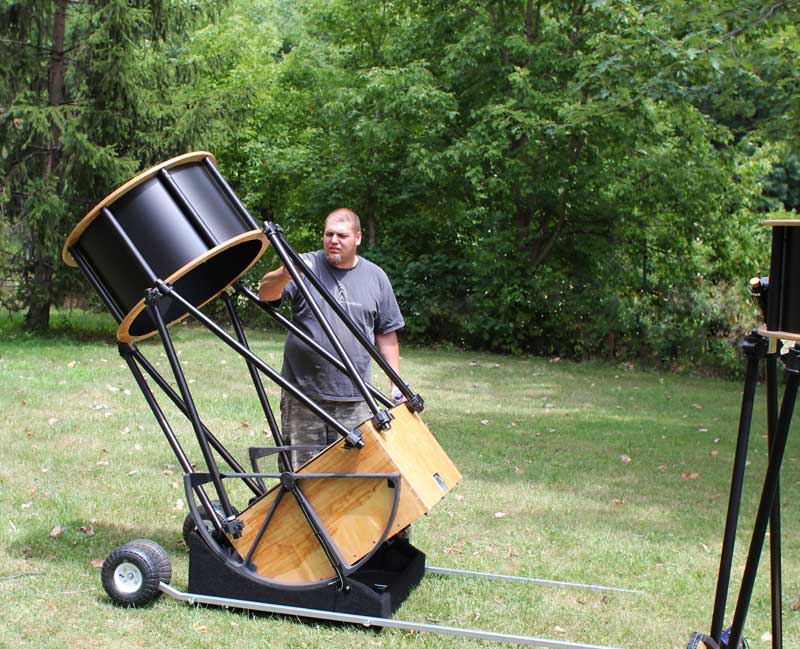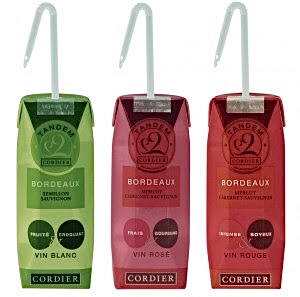
Louis D
-
Posts
9,364 -
Joined
-
Last visited
-
Days Won
1
Content Type
Profiles
Forums
Gallery
Events
Blogs
Posts posted by Louis D
-
-
3 hours ago, PeterW said:
I’m surprised you’ve not at least tried to hide it, You could drape a towel, hang some clothes on it….
Peter
What??? And cover up a fine piece of modern art and/or woodworking? 😉
-
 1
1
-
-
Glad to know I'm not losing my mind when so many keep claiming APOs are good to go right out of the case, and yet that has not been my experience.
My AT72ED is a small ED doublet, and it is ready to observe in almost no time at all.
-
Yes, it has a built in ND3 which is only good for photography by itself. It also comes with a variable polarizing filter to screw into the bottom of your eyepiece to drop the brightness down enough for visual observing. I set it to near it darkest point and then fine tune the brightness by rotating the eyepiece in the holder since the wedge slightly polarizes the light itself, allowing for more extinction at the first of the two stacked polarizers. I've ordered a SVBONY ND3 (ND1000 in their parlance) to see if I like it better than the variable polarizer.
The image is certainly sharper and contrastier than when using Baader Solar Film.
The construction is very similar to the Altair Astro Herschel wedge, just in a 1.25" format and without the built-in polarizing filter. I checked the rear ceramic, and it never got even remotely hot with my 90mm refractor after 20 minutes of observing.
Uniquely, it comes with a built in variable iris with many blades. I tried it out for fun, but couldn't really see any point to it. Why mask off aperture? That limits resolution.
Is it safe? Seemingly so. Worst case, the prism shatters and all the light goes out the back instead of just ~92%.
Size wise, it's about the same as the 1.25" Lunt wedge. It's a surprisingly heavy chunk of equipment.
-
 1
1
-
-
2 hours ago, pointedstick said:
It still doesn't seem like the highest quality item; the zeroing knobs don't seem to have any way to lock them in place, so I imagine it'll need to be re-zeroed a lot. I may end up replacing it anyway. But at least now it's not a necessity.
If it gets to being a problem, run a strip of 3M blue masking tape over them. That stuff comes right off again with no residue and is basically waterproof as well.
-
1 hour ago, Don Pensack said:
Here in my Bortle 10 environment in Los Angeles (you can read a newspaper at night)
😲

That's crazy bright. No wonder you drive to Mt. Pinos to observe. At least you don't have to worry about finding eyepieces or lens caps in the dark there in LA, because there is no darkness. 😁
-
2 hours ago, Starslayer said:
For what it is worth
Pretty much what I was saying from recollections of past discussions on this RDF.
-
1 minute ago, Starslayer said:
Useful advice but hey - we should not be having to do this with a £700 scope out of the box? 😉
A good wooden tripod that absorbs vibrations like a Berlebach costs at least $300 alone. Of course, you could make your own if you're handy, I suppose.
-
15 hours ago, Alan64 said:
You do want short barlows with a Newtonian, the shorter the better.
For refractors, I'd agree due to infocus issues with a diagonal, but this is not an issue with Newtonians. I've had good luck with long Barlows in my Dob without them protruding into the light path. In general, they've been sharper than the shorty or mid-length Barlows. The only shorty I've found to be very good and still be under $70 is a used Celestron Ultima (Parks GS) 2x Barlow. I've never tried a Klee or Dakin Barlow, but they tend to cost more than $70, which is about all I'm willing to spend on a piece of gear I rarely use.
-
 1
1
-
-
14 hours ago, pointedstick said:
The included tripod is wobbly when anything is touched at all. But the it settles down quickly enough and whole ensemble is very lightweight and portable, so that seems like a reasonable trade-off.
Try putting vibration suppression pads under each tripod foot.
14 hours ago, pointedstick said:The included red dot sight is junk. It doesn't have enough elevation to actually align it with the telescope!
Try shimming the foot to see if you can get it to pop up a bit.
-
Better than finding out you don't have enough in-focus to reach focus. That situation requires finding a diagonal with a shorter optical path length or simply going without a diagonal.
-
6 hours ago, Deadlake said:
Be quiet, since APO’s are ready to go immediately observers who have busy lives will buy them.
Speak for yourself. My TS-Optics (Sharpstar) 90mm FPL-53 triplet APO takes at least 30 minutes to acclimate just 15 degrees F (7 degrees C ?) before stars quit having spikes. My 8" Dob acclimates in about the same time, but to get rid of blurriness associated with tube currents. If I put fans behind the primary, I'd probably be ready to go in under 10 minutes. Low power views are fine in the Dob while waiting. Not so much with the APO. Those spikes are still plainly visible on bright open clusters like the Pleiades.
-
 2
2
-
-
On 14/05/2021 at 09:40, Rusted said:
There is clear logic to choosing an APO for its shorter focal length without suffering the "LSD trip" of false colours.
A shorter Newtonian is not quite so compromised by coma as is a short refractor by its rainbow hues.
Now what was the question again?At f/2.7 or thereabouts, there is no comparison between a well figured 28" Newtonian with Paracorr II and any 28" refractor I know of.

-
 3
3
-
 1
1
-
-
Maybe they hand check each eyepiece like Tele Vue for quality assurance to justify their higher price. 🤣
-
 3
3
-
-
I'm mostly concerned about eye relief as I've stated earlier in this thread.
The range actually covers my most used range of focal lengths. Add a Barlow, and all I need is a good widest field eyepiece to cover most of my needs.
-
12 minutes ago, johninderby said:
How did you know we all drink our wine from juice pouches now?
Seriously, though, most wine corks in the states I've pulled lately are now made of some sort of plastic or rubber material. They seem to do the job.
Some wine bottles have twist off caps with no cork of any sort at all. It's kind of disappointing when you get one of them. It takes most of the fun out of opening a wine bottle.
Then there was my neighbor who always kept one of these on her kitchen counter:

She kept one of these constantly filled all day long with wine, especially while working outdoors on her flower beds:

She wasn't pretensive. However, she just passed away from liver failure earlier this year at the age of 58, so it catches up to you in the end.
-
Due to edge distortion compressing the outer part, they provide the same TFOV at a given focal length as competitors' 100 degree AFOV eyepieces which stretch the outer part to get to 100 degrees. Effective AFOV (eAFOV) is about 90 degrees for both variations on 100 degrees.
-
If you are referring to the Meade MWA 15mm, they're actually not all that new. In fact, they've been discontinued by Meade and are sold out at most retailers.
Here's a review of them under the Omegon Panorama II brand name.
-
3 hours ago, KP82 said:
One of the advantages of a 4 - 5" refractor is that you can easily take it to dark sites and they will show better results than a 10 - 12" in a severely lighth polluted garden.
If I'm going to the trouble of going to a star party or weekend camping at a dark site, I'm taking the big guns with me to make the most of those dark skies.
-
 1
1
-
-
3 hours ago, Deadlake said:
Ps: For deep sky aperture is indeed the limiting factor, for anything planets and doubles use a refractor.
If you get a premium, hand figured mirror, large Dobs blow the doors off the planetary views through any refractor under 8" that I've ever looked through. At star parties, the views of Jupiter and Saturn through high end TECs, Taks, and AP scopes simply lacked the fine detail seen through 12" and up Dobs sporting Zambuto and other fine mirrors. Perhaps under UK skies your refractors consistently beat large Newts, but not everywhere is this the case.
Perhaps for vastly unequal doubles the unobstructed refractor rules. However, if you make an off axis aperture mask for a 16" Newt, you've got a roughly 6" unobstructed instrument now that should compete very favorably.
-
 4
4
-
-
A long focal length, 6" refractor is just about enough to start resolving large, close globular clusters like M13 at 200x and above. However, an 8" Dob will do it better while being cheaper and easier to mount (it's built in for the Dob). A 10" Dob will obviously be even better. Aperture rules for both resolution and light gathering. Dark sky sites are a must for galaxies. Even then, don't expect them to look like astrophotographs, they don't. You have to have tempered expectations.
Higher quality glass reduces false color or fringing that robs images of contrast. This is mostly important for discerning low contrast details on planets.
-
 6
6
-
-
I purchased a Hercules Herschel prism direct from their website. It took just over 2 weeks to get to me from China, so not bad at all. No customs or tax issues, either.
It ships with a variable polarizing ND filter which you need to set near maximum extinction visually since the wedge only comes with an ND3/ND1000 preinstalled, which might be fine for photography, but it is much too bright visually. I went ahead and ordered a SVBONY ND3/ND1000 filter to see how that works instead of or in addition to the variable polarizer.
I also bought the SVBONY solar finder. It works pretty well for $16 to get the sun pretty close to centered once I've minimized the scope's shadow on the ground. I'm thinking of making a solar filter for my 50mm RACI from leftover Baader solar film I have on hand.
From a quick look at the sun between clouds through my 90mm APO, it does appear to put up sharp images. I also tried a narrowband green Optica b/c interference filter, and didn't notice that much difference. I'll have to try the other 5 in that series next. The built-in variable iris aperture just makes my floaters more apparent while dimming the sun, so not too useful.
Optica b/c interference filters:


-
 1
1
-
-
If you have bright skies, neighbor's lights, etc., you might want an observer's hood to improve contrast at the eyepiece by blocking stray light.
-
 1
1
-
-
Keep in mind, some beginners go big at the start due to age and wealth. I know of several folks who bought a Harley Road King as their first bike rather than a Jinlun Rebel to learn on. Others have bought a 20" Obsession Dob fully loaded rather than an 8" Sky Watcher. Yet others bought a cabin cruiser for their first boat rather than an inflatable dinghy. My point is, different strokes for different folks.
-
 1
1
-
-
Definitely a reflection off the rear baffle tube. I get the exact same oval image in my 127 Mak when using a 2" visual back and widest field 40mm SWA eyepiece as I move a bright star past the edge of the rear baffle's clear aperture. It grows bigger the farther off axis I move it.
5 hours ago, Pixies said:That looks like an internal reflection in the baffle tube.
I flocked the one in my old Skymax 90 and it got rid of those 'arcs'.
Flocking the rear baffle tube sounds like a great idea, though possibly difficult. How did you accomplish it, @Pixies?











Celestron ultima 2x
in Discussions - Eyepieces
Posted
I've seen the same effect here in the winter after a strong Arctic front pushes through and the sky has a day to settle. On those nights, sky-glow is markedly less, but the air is also much colder than it would otherwise be.